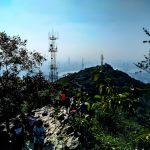Download links
How to install Preserving the Oldest Rice Terraces: Banaue's Legacy APK?
1. Tap the downloaded Preserving the Oldest Rice Terraces: Banaue's Legacy APK file.
2. Touch install.
3. Follow the steps on the screen.
Description
The Banaue Rice Terraces, often referred to as the “Eighth Wonder of the World,” boast a rich history that dates back over 2,000 years. These terraces were ingeniously carved into the mountains of Ifugao by the indigenous people, who developed sophisticated agricultural techniques to cultivate rice in a challenging environment. The construction of these terraces is attributed to the Ifugao people, who utilized their intimate knowledge of the land and water systems to create a sustainable farming method that has endured through generations.
The terraces are not merely agricultural fields; they represent a complex system of irrigation and water management that reflects the ingenuity and resilience of the Ifugao culture. The historical significance of the rice terraces extends beyond their agricultural function. They are a testament to the Ifugao people’s deep connection with their environment and their ability to adapt to the mountainous terrain.
The terraces were built using local materials, primarily stone and mud, and their construction involved meticulous planning and labor. Over centuries, this agricultural landscape evolved, becoming a symbol of cultural identity for the Ifugao people. The rice terraces are not only a source of sustenance but also a vital part of the community’s social fabric, influencing rituals, festivals, and traditional practices that celebrate the relationship between the people and their land.
Key Takeaways
- The Banaue Rice Terraces were built over 2,000 years ago by the Ifugao people without the use of modern tools and machinery.
- The terraces are not only a breathtaking sight but also serve as a sustainable farming system, showcasing the ingenuity of ancient agricultural practices.
- Climate change, urbanization, and population decline are some of the challenges threatening the preservation of the Banaue Rice Terraces.
- Various organizations and government initiatives are working to preserve the terraces through conservation efforts, sustainable tourism, and community involvement.
- The Banaue Rice Terraces are not only a UNESCO World Heritage site but also hold immense cultural significance for the Ifugao people, representing their traditions, beliefs, and way of life.
The Importance of Preserving Banaue’s Rice Terraces
Ecological Significance
From an ecological standpoint, these terraces play a vital role in maintaining biodiversity in the region. They provide habitats for various plant and animal species while also contributing to soil conservation and water management. The intricate irrigation systems that support rice cultivation help prevent soil erosion and maintain water quality in nearby rivers and streams. As climate change poses increasing threats to agriculture worldwide, preserving these terraces can serve as a model for sustainable farming practices that harmonize with nature.
Cultural Significance
Culturally, the rice terraces are an irreplaceable heritage site that embodies the traditions and values of the Ifugao people. They are not just agricultural landscapes; they are living cultural monuments that reflect centuries of knowledge passed down through generations. The preservation of these terraces is essential for maintaining the Ifugao identity and ensuring that future generations can continue to practice their ancestral traditions.
Preserving a Way of Life
Furthermore, the terraces are integral to various cultural rituals and festivals, such as the Imbayah Festival, which celebrates rice harvests and showcases traditional music, dance, and crafts. By preserving the rice terraces, we safeguard not only a physical landscape but also a way of life that is deeply intertwined with the cultural heritage of the Ifugao people.
Challenges in Preserving Banaue’s Rice Terraces

Despite their historical and cultural significance, the Banaue Rice Terraces face numerous challenges that threaten their preservation. One of the most pressing issues is the impact of modernization and urbanization. As younger generations migrate to urban areas in search of better economic opportunities, traditional farming practices are being abandoned.
This shift has led to a decline in rice production and maintenance of the terraces, resulting in overgrowth and deterioration of these once-thriving agricultural landscapes. The loss of traditional knowledge about terrace farming further exacerbates this problem, as fewer individuals possess the skills necessary to sustain these intricate systems. Additionally, environmental factors pose significant threats to the rice terraces.
Climate change has led to unpredictable weather patterns, including prolonged droughts and intense rainfall, which can cause landslides and damage to the terraces. The increasing frequency of natural disasters has made it challenging for farmers to maintain their crops and manage water resources effectively. Furthermore, deforestation in surrounding areas contributes to soil erosion and reduces the natural barriers that protect the terraces from environmental degradation.
These challenges necessitate urgent action to ensure that both traditional practices and environmental sustainability are prioritized in efforts to preserve this UNESCO World Heritage site.
Efforts to Preserve Banaue’s Rice Terraces
| Year | Number of Terraces Restored | Amount of Funding | Number of Community Volunteers |
|---|---|---|---|
| 2015 | 50 | 100,000 | 75 |
| 2016 | 65 | 120,000 | 80 |
| 2017 | 70 | 130,000 | 85 |
| 2018 | 75 | 140,000 | 90 |
In response to the myriad challenges facing the Banaue Rice Terraces, various initiatives have been launched aimed at their preservation and revitalization. Local government units, non-governmental organizations (NGOs), and community groups have come together to implement programs that promote sustainable agriculture and raise awareness about the importance of preserving this cultural heritage. One notable initiative is the establishment of training programs for young farmers that focus on traditional farming techniques, organic agriculture, and sustainable land management practices.
By equipping younger generations with the skills needed to maintain the terraces, these programs aim to foster a renewed interest in terrace farming. Moreover, ecotourism has emerged as a potential avenue for generating income while promoting conservation efforts. By attracting visitors to experience the beauty and cultural significance of the rice terraces, local communities can benefit economically while simultaneously raising awareness about the importance of preservation.
Guided tours often include educational components that highlight traditional farming practices, local customs, and environmental stewardship. This approach not only provides financial support for maintenance efforts but also encourages visitors to appreciate and respect the cultural heritage of the Ifugao people.
The Cultural Significance of Banaue’s Rice Terraces
The cultural significance of Banaue’s Rice Terraces extends far beyond their agricultural function; they are deeply embedded in the spiritual and social life of the Ifugao people. The terraces are often viewed as sacred spaces that embody ancestral wisdom and connection to nature. Traditional rituals associated with rice planting and harvesting reflect this spiritual relationship, as farmers invoke blessings from deities for bountiful harvests.
These practices are integral to community cohesion, fostering a sense of identity among the Ifugao people while reinforcing their connection to their ancestors. Furthermore, the rice terraces serve as a canvas for artistic expression within Ifugao culture. The intricate designs of the terraces themselves can be seen as a form of artistry that reflects both functionality and aesthetic appeal.
Festivals celebrating rice harvests not only highlight agricultural achievements but also provide opportunities for cultural expression through music, dance, and storytelling.
The Future of Banaue’s Rice Terraces

Innovative Approaches to Sustainable Agriculture
As global interest in sustainable agriculture grows, there is potential for innovative approaches that integrate traditional practices with contemporary techniques. Research into climate-resilient crops and sustainable farming methods could enhance productivity while minimizing environmental impact.
Collaborative Efforts for Preservation
Collaborative efforts between local communities, government agencies, and academic institutions can foster knowledge exchange and promote best practices for terrace maintenance. Moreover, continued investment in community-based tourism can provide economic incentives for preserving these cultural landscapes. By creating opportunities for local artisans and farmers to showcase their products and skills to visitors, communities can generate income while fostering appreciation for their heritage.
Education and Stewardship
Education plays a crucial role in this process; raising awareness among both locals and tourists about the significance of the rice terraces can cultivate a sense of stewardship that transcends generations. Ultimately, preserving Banaue’s Rice Terraces requires a multifaceted approach that honors traditional knowledge while embracing innovation. As stewards of this remarkable cultural landscape, it is imperative that both local communities and global stakeholders work collaboratively to ensure that these terraces continue to thrive for generations to come.
The future of Banaue’s Rice Terraces is not just about maintaining an agricultural system; it is about safeguarding a way of life that embodies resilience, creativity, and deep-rooted cultural identity.
If you are interested in exploring more about the culture and history of the Philippines, you may want to check out an article on olxtoto.world titled “Rahasia Menang Besar dalam Olxtoto Laro.” This article discusses strategies for winning big in the Olxtoto lottery game, which could be a fun way to test your luck while learning about the country’s traditions. Additionally, you can also read about “Keberuntungan Besar dengan Olxtoto Lottery” on the same website, which delves into the concept of luck and how it plays a role in the lottery. These articles provide a unique perspective on gaming and its connection to cultural practices, making them a fascinating read for those interested in both. Source
FAQs
What are the Banaue Rice Terraces?
The Banaue Rice Terraces are ancient terraces carved into the mountains of Ifugao in the Philippines. They are often referred to as the “Eighth Wonder of the World” and are a UNESCO World Heritage Site.
How were the Banaue Rice Terraces created?
The terraces were hand-carved over 2,000 years ago by the Ifugao people using minimal equipment, such as stones and wood. The terraces were created to make the mountainous terrain suitable for rice cultivation.
What is the significance of the Banaue Rice Terraces?
The Banaue Rice Terraces are not only a stunning example of ancient engineering and agricultural practices, but they also hold cultural and historical significance for the Ifugao people. The terraces are a symbol of their rich heritage and traditional farming methods.
Can visitors explore the Banaue Rice Terraces?
Yes, visitors are welcome to explore the Banaue Rice Terraces. There are hiking trails and viewpoints that offer breathtaking vistas of the terraces and the surrounding mountains. It is important to respect the local customs and environment while visiting.
What is the best time to visit the Banaue Rice Terraces?
The best time to visit the Banaue Rice Terraces is during the dry season, which typically runs from March to May. The terraces are at their greenest during this time, and the weather is generally more favorable for hiking and sightseeing.





